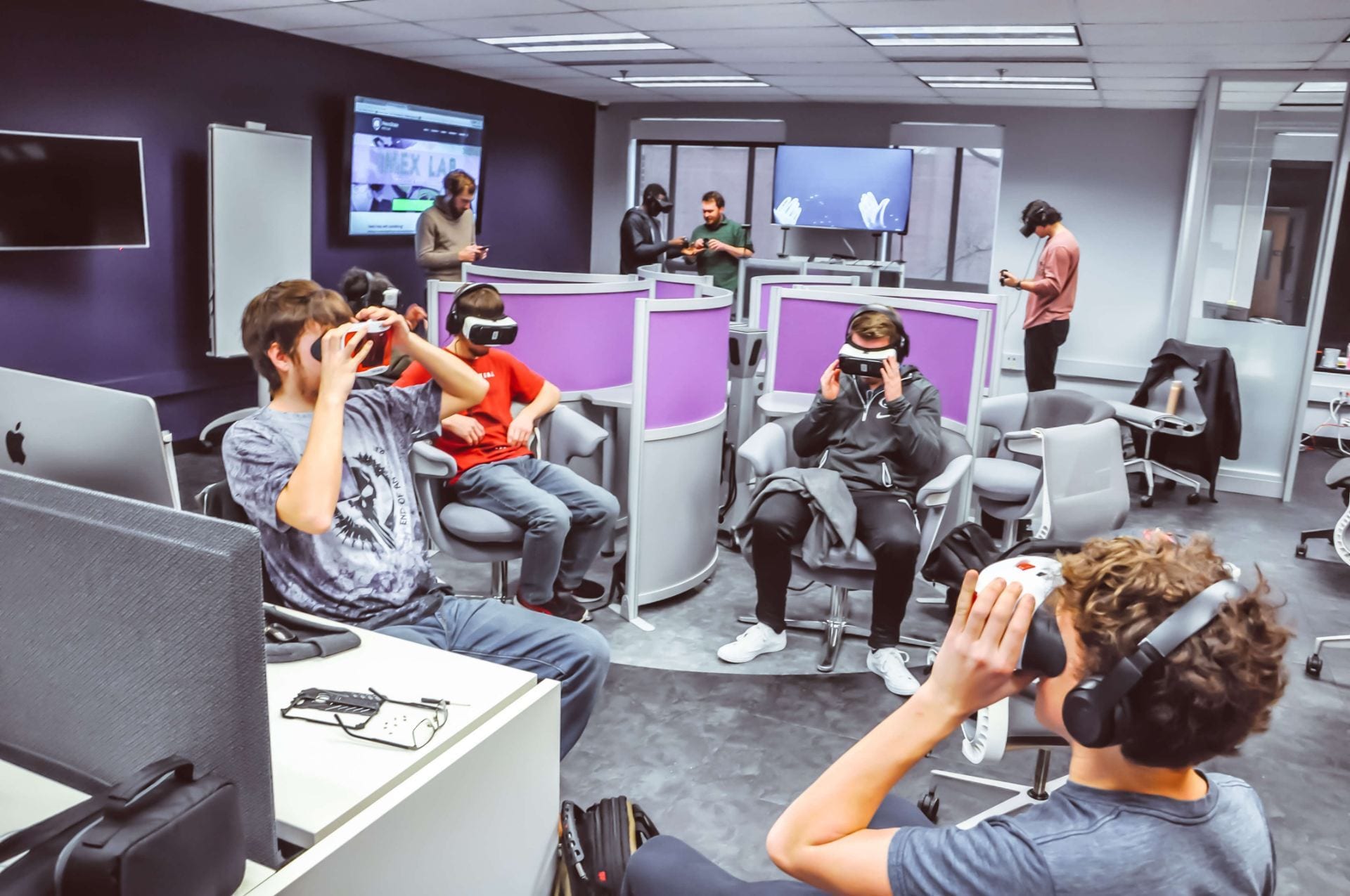How Remote Learning Is Affecting the Future of Classroom Design
Classroom design has been forced to adapt to the needs of remote learners and hybrid teaching approaches

When it comes to classroom design, the pandemic is responsible for a lot of change.
“It's causing us to rethink how we design everything from a lecture hall to a small classroom,” says John Pfeffer, a team member of IT Customer Service at University at Buffalo who is charged with classroom and learning space design, as well as determining future plans as technology changes.
Prior to March, modern classroom design was very focused on creating active learning spaces designed to facilitate all the students in the space being able to collaborate, says Julie Johnston, acting Associate Vice President of Learning Technologies at Indiana University.
Active classroom design prioritizes writable surfaces, moveable chairs, and multiple displays so every student can clearly see the material the teacher is presenting. Since March, there has been an effort to extend that active learning environment to students who are not in the room and make spaces suitable for hyflex and hybrid learning.
Better Acoustics and More Mics
“We've discovered how important acoustics are,” Pfeffer says. “When you've got remote students, and local students, they need to be able to hear each other so that they feel like they're part of the same group.”
This means more mics, placed not just at the podium but throughout the room so student discussions can be captured.
To do this at her institution, Johnston says, “We are creating audio zones for the student zone versus the instructor zone, and the ability to mute the student zone so that you don't have the ruffling paper when you just want to have the instructor having a conversation and not opening it up to all.”
Tools and ideas to transform education. Sign up below.
At San Diego State University, leaders have designated hybrid-video class ready rooms as “connected classrooms,” says Rebecca Frazee, a faculty member of the Learning Design and Technology Program at the School of Journalism. Frazee, who is also associate director of FLEXspace.org, an online community and resource dedicated to sharing classroom designs, adds an important component of a COVID-safe connected classroom is ceiling-mounted microphones. “They're all over the room and you can pick up the audio really well, but they're also not being touched and handled,” Frazee says.
More Cameras and Display Surfaces
The modern classroom features cameras that will track a professor’s movement, and offer more camera angles and different perspectives, Pfeffer says.
“Traditionally, the goal is to just capture as much of everything as possible,” he says. “Now the goal is going to be more about capturing the individual instructor and the individual students in much greater clarity for the remote students to see. And vice versa, how are those remote students seen? We need to consider ways to show those remote students as well as the content that's being talked about.”
These video and audio components in new classrooms are being designed with lecture capture technology in mind for students who may be participating online asynchronously, says Frazee.
Educators anticipate these trends continuing even after the pandemic. “We don't have a crystal ball,” Johnston says, “But we do believe that this has the capability of changing what students want and opt for. Thus, having the ability to provide a more improved, quality hybrid experience in our classrooms is the direction we are heading.”
Sharing Resources
Educators looking to upgrade learning spaces should tap into the global community that's interested in learning about classroom design, says Frazee. FLEXspace, a favorite of designers, has more than 5,000 members who upload and share their designs from campuses all over the world. “You can take a sort of virtual field trip to see what other campuses are doing,” Frazee says.
In addition, Frazee recommends resources such as Educause, Learning By Design Magazine and the Association for Learning Environments, which focuses primarily on K-12 institutions. Still, it’s important for universities to look at what’s coming up from the K-12 pipeline, says Frazee.
In general, she advises university officials to look at the spaces that have won awards in the past from all these organizations. “I think that's a great way to see some of the innovative thinking that's going on around the world,” Frazee says.
Erik Ofgang is a Tech & Learning contributor. A journalist, author and educator, his work has appeared in The New York Times, the Washington Post, the Smithsonian, The Atlantic, and Associated Press. He currently teaches at Western Connecticut State University’s MFA program. While a staff writer at Connecticut Magazine he won a Society of Professional Journalism Award for his education reporting. He is interested in how humans learn and how technology can make that more effective.

